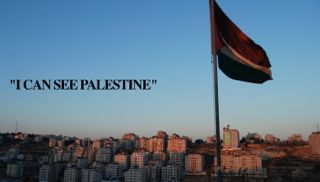Introduction
The health sector in the Gaza Strip has been severely affected by the prolonged closure of Gaza’s borders and by the Israeli military operation at the turn of the year. In February 2009, WHO together with health cluster partners, published an initial assessment of health needs in Gaza following the Gaza war. In March a WHO Specialised Health Mission, commissioned by the WHO Executive Board, visited Gaza to assess health and humanitarian needs following the Israeli military operations. Their report was presented to the World Health Assembly in May.
The purpose of this report by WHO and the health cluster, is to provide an up-to date overview of the situation in the health sector six months after the end of the Israeli military operation. It focuses on the functioning of health services and on the health status of the population. As with all such reports, it is subject to the limitations of the data which is available.
Health Services
Most health services have been functioning normally since the end of hostilities. All primary health care facilities (PHC), except for two centres which were completely destroyed and relocated to a new building, resumed regular working hours after the ceasefire on January 18th, 2009, providing essential PHC services that include vaccination, antenatal care, chronic disease management, general medical consultations for children and adults, as well as PHC diagnostic services and dental care. The public health program activities have resumed as well, but with the pre-existing limitations. Hospital services including outpatient departments, elective surgical operations and inpatient admissions also resumed and activity levels have matched or exceeded those for the same period last year.
Health care facilities
Structural damage to the hospitals and PHC facilities has not been adequately addressed due to the lack of construction materials. Minor repairs and very basic reconstruction, such as window replacement, has taken place using the resources currently available. For most PHC facilities, this has been sufficient to repair the damage that occurred. The main affected hospital was Al-Quds Hospital but the patient care services provided by the facility have fully resumed. From the two totally destroyed PHC centres, the MoH relocated to different buildings.
Islamic Relief is planning reconstruction of 10 of the most affected PHC facilities and the Qatarian government has also promised funds for rehabilitation.
Medical Supplies and logistics
An estimated 4,600 tons of donated medical supplies and equipment entered into the Gaza Strip during and immediately after the conflict, creating enormous logistical challenges for the MoH Central Drug Store. WHO, in cooperation with other organizations such as MAP UK, Islamic Relief, and the ICRC provided logistical support to the CDS to facilitate the sorting, storage, and distribution of these donated items. This included the funding of pharmaceutical staff and labourers, over 7,000m² of warehouse space, as well as warehouse transportation and IT equipment. An inventory process was initiated simultaneously in order to develop a more accurate picture of current and future needs.
Unfortunately, the donation stocks have had only a moderate impact on pre-existing supply shortages due to a widespread problem of short expiry dates, the preponderance of non-essential items, and a lack of variety in the items sent. In the latter case, a narrow list of emergency and primary care items were donated in large quantities at the expense of items for specialized care. In total, the CDS received estimated 300-350 items out of the 480 items on the MoH essential drug list. Although there is a one year supply for approximately 100 of these items, the rest of the items will cover needs for much shorter periods. As of July 2009, approximately 16 - 20% of essential items are out of stock for the Drug and Disposable Stores respectively. Although supplies have been arriving from the West Bank, the quantities and variety of items sent have been insufficient to significantly address current shortages. Furthermore, many of the out of stock items in Gaza are also out of stock in the West Bank. Without re-supply, the Drug Store expects to have an estimated 140 items out of stock by September 2009.
Utilities
The 23 days of Israeli military operations in Gaza Strip heavily impacted the water and sanitation services, leading to the near collapse of these vital services. Heavy bombardments reduced the power supply to a minimum level and damaged a number of water and wastewater facilities, affecting the operation of over 150 water wells and 37 sewage pumping stations. After the ceasefire, approximately 10% of the Gaza population was cut off from the water supply and sewage began flooding populated areas and farmland. Repairs to the water supply and sewage systems were initiated by several different parties following the ceasefire. Access to water has gradually improved; by June, approximately 10,000 people remained disconnected from the water supply.
Repairs to damaged power lines and the entry of diesel fuel to run the local power plant has increased the availability of public electricity at the health facility level. Power outages across the Gaza Strip have now decreased to a daily average of 2 hours. Fuel needed to run emergency generators during power outages is in good supply, and all hospitals have two backup generators. All health facilities have access to water.
Medical Staff
During the first few days of the Cast Lead Operation on Gaza, the Unions of health professions in the West Bank called an end to the strike of health staff which had started at the end of August 2008, However the de facto health authorities in Gaza did not permit all those who sought to return to work to go back to their jobs.
The following data has been provided by officials for the MoH in Gaza. The veracity of the information has still to be confirmed.
There are approximately 8,500 health staff at work in MoH facilities in Gaza as of July 2009. Of these, about 6,500 are paid by the PNA and 2,000 paid by the de facto authorities. Of the latter group, around 1,300 are health staff who were previously on the payroll of the PNA and about 700 are new recruits.
There are another 2,000 health staff who are not working, are at home and are continuing to be paid by the PNA. They include staff who were previously on strike whom the de facto authorities have not permitted to return to work or not to their original posts and those who have chosen to stay at home rather than work for the MoH in its current situation.
Referral Abroad Department (RAD)
The referral of patients out of Gaza has been severely disrupted over recent months by various factors of which the following are the key ones:
• During the Operation Cast Lead emergency cases only were referred abroad, all of them through the Rafah border;
• The Palestinian MoH decided not to refer any cases to Israeli hospitals during the Gaza conflict and only to do so as a last resort (an average of 213 cases a month were referred to Israeli hospitals in 2008). That number reduced to a trickle in the first’s months of 2009; it has now slightly increased.
• A dispute between the de facto Gaza health authorities and the Palestinian MoH led to the closure of the RAD from 22 March to 27 April with no applications for referrals being processed during this period. A new referral abroad committee was appointed following resolution of the dispute and some changes in procedures agreed by the parties;
• The Rafah crossing was opened periodically after the end of the conflict for patients to be treated in Egypt but this has continued to be unpredictable and intermittent.
The results in terms of number of patients exiting Gaza for treatment through Rafah can be seen in the following graphs. 3,250 patients exited through Erez in the first six months of 2008 – 541 a month on average. 4038 exited in the 12 months from July 2008 – an average 336 a month.
Health Status
Casualties and Disabilities
The number of persons who have acquired permanent disabilities as a result of traumatic injuries sustained during the military strike is still unknown. It is also not clear how many people among the injured received medical and physical rehabilitation services, as only fragmented information is available through databases of individual service providers and facilities. Furthermore, there are reports that the patients are often registered with more than one organization contributing to the inaccuracy of data.
Obtaining information on prevalence, distribution and characteristics of disabilities in Gaza is therefore still a pending priority, and is necessary to inform more effective and appropriate interventions.
Meanwhile, a mapping exercise on the availability and characteristics of service providers in Gaza is ongoing. The information collected will assist in clarifying the availability of services, channel the demand for it and improve access. This should ensure that all persons with disabilities receive appropriate and quality services, that the duplication of services is reduced and that the referral of persons to appropriate services is guaranteed.
At least 15 organizations are currently active in providing centre and/or community based medical and rehabilitation services. These services include wound care, physiotherapy, occupational therapy, prescription of assistive devices as well as psychosocial counselling. Several organizations specialized in sensory impairments are providing hearing and vision testing, along with other services to persons with permanent sensory impairments. However, the quality of the services varies by organization.
People with traumatic injuries and permanent disabilities may require assistive devices such as wheelchairs, crutches, walking aids and pressure care products. These items have been donated in large quantities to organization providing rehabilitation services. However, poor coordination capacity hampered an equal and effective distribution of these items, and it is still unclear what needs remain. Many persons received the same assistive devices from different organizations, and there are reports that beneficiaries are selling these devices. There are also limited options for beneficiaries to receive maintenance services for their devices. Furthermore, many of the persons responsible for prescribing assistive devices often lack the technical skills required to ensure that devices are appropriate for the needs of the beneficiary. The inappropriate prescription of devices, as well as a lack of training for beneficiaries on how to correctly use and maintain their devices, can lead to complications and further permanent disability1.
According to available information, 221 persons required amputation of limbs as a result of traumatic injuries during the military strike. The Artificial Limb and Polio Centre (ALPC), the main local producer of prosthesis in Gaza, have recently increased its production capacity with the help of international technical assistance and training of new local staff. They are currently able to produce 10-15 artificial limbs per month. However, new amputees are still on a waiting list for receiving prostheses and additional cases of amputees are returning from abroad and will also require prostheses.
There is an urgent need to increase the production of prostheses within Gaza to ensure that new amputees receive prostheses in a timely manner. This is important to reduce further disability and assist with inclusion in society.
Communicable Diseases
Watery diarrhoea as well as acute bloody diarrhoea and viral hepatitis remain the major causes of morbidity among reportable infectious diseases in the refugee population of the Gaza Strip. Immunization coverage remains high across the Gaza Strip.
Contaminated water samples have been found in the public water supply, water storage tanks, and in water wells in areas that were severely damaged during the war. An increasing trend was evident for watery diarrhoea cases after the crisis, however, no communicable disease outbreak occurred in the Gaza Strip.
By the end of March the reported incidence from UNWRA clinics of acute watery diarrhoea in children less than 3 years of age breached the alarm threshold. However, this trend fluctuated for several weeks, did not imply an outbreak and was consistent with the disease’s seasonal variations.
By the end of April, viral hepatitis also breached the alarm threshold but the pattern of reported cases was not consistent with an epidemic. Special clustering was noticed in Beach camp.
According to UNRWA’s epidemiological surveillance system, no other major diseases showed breaches of alarm and alert thresholds during the last six months and their incidence remained within the seasonally expected range.
The most important epidemiological event in the reporting period was the acceleration of influenza A (H1N1) pandemic leading to the declaration of a phase 6 pandemic alert by the WHO Director General on the 11th of June 2009. No confirmed cases have yet been detected in Gaza.
Nutrition
- Underweight in children 9-12 months
In February 2009 the MoH nutrition surveillance system was reactivated, after several months of suspension, providing data related to the period following the military strike The new data related to 2009 indicate no significant trend in acute malnutrition in this age group: only 1.2% of children aged 9-12 months who attended MoH PHC facilities in February were found to be underweight. This prevalence was slightly lower than the prevalence found in 2006 (2.3%) and in 2007 (2.2%) in the same age group.
Underweight, stunting and overweight in children 6-16 years
Data on children 6-16 years, previously not available, have been collected from September 2007 to June 2008 through the MoH nutrition surveillance system in Gaza and recently analyzed. The findings revealed that the prevalence of underweight is 1.4%, while stunting prevalence is 7.2%. If analyzed by district, no difference was detected in the level of stunting among school children and in general these results are at acceptable levels.
However, high prevalence of overweight2 children was found. In children 10-16 years overweight prevalence is 15.9%. This prevalence is higher in North Gaza District (20.4%) and lower in Rafah District (13.4%). The prevalence of overweight among females is five times that of males: 24.6% compared to 5.4%. At district level, the largest difference between female and males was detected in Gaza District: 30.0% in females and 6.5% in males. A more in depth analysis is needed but the lack of physical activity and poor diet are considered to be a possible reason for these findings.
Iron Deficiency Anaemia
The level of anaemia among children 9-12 months was 65.5% in February 2009, which is slightly lower than the averages in 2006 (68.2%) and 2007 (72.1%). The level of anaemia among pregnant women was 37.5% in February 2009, which is the same as the 2006 average and higher than the 2007 average (33.3%).
The level of anaemia among school children 6-18 years old was estimated at 32.3% in May 2009, which is lower than the prevalence among under 5 children (47.9%)3 and young children (65.5%).
No differences were noticed between males and females aged 6-12 years, but anaemia levels were noticeably higher among females than males in the age group 12-18 years. This difference could be due to the increased demand for iron to compensate for the loss during the menstrual period among adolescent girls. Noticeable differences were shown among governorates, with the highest level of anaemia in Gaza (44.7 %) and the lowest in Khan Younis (19.5 %).
Mental Health
A household sample survey[1] was carried out in Gaza Strip to collect information on the living conditions of Gazans from 3 to 12 March 2009. According to the survey, about 1% of the population suffered severe acute psychological distress as a result of the war.[2] A considerable proportion reported symptoms of war-related distress several weeks after the withdrawal of Israeli troops and the end of bombardments.
For example, 13% of the population suffered from sleeping problems. Children aged 5-9 (especially girls) seem to have been somewhat more affected by this problem, while youth aged 15-24 (particularly boys) were bothered slightly less than other age groups. 23% of children aged 5-14 had a bed-wetting problem, while 26% of children had problems with their concentration.
The following symptoms of psychological distress were reported among the population in general and among adults 18 years and over in particular: 34% reported frequent loss of appetite and difficulties concentrating; 27% of youths reported nightmares, and 35% reported feelings of anger and depression; 9% of adults said that they were totally unable to carry out normal activities such as getting dressed, washing, household chores, going to work etc. in at least 7 of the past 14 days; 47% confirmed that they were able to carry out ordinary, mundane activities each day of the reference period.
Furthermore, ten weeks after the end of the recent crisis, WHO carried out another survey to measure the prevalence of psychological distress among 500 adult patients visiting 5 Primary Health Care (PHC) centres in Gaza Strip, as well as to identify associated demographic risk factors and the ability of General Practitioners (GPs) to identify patients with psychiatric problems using the General Health Questionnaire (GHQ-12).
The results of the study reveal that 37% of adult patients that sought PHC services showed psychological distress as measured by the GHQ-12. No differences have been detected between males and females. Older patients showed higher rates of prevalence (70%).
The demographic risk factors associated with having psychological distress are:
-
1. Place of living: patients living in Khan Younis district had the highest prevalence of psychological distress (45.7%) while patients living in Rafah district had the lowest prevalence of 30%.
2. Marital Status: divorced or widowed patients had the highest prevalence (92. 9%) while singles had the lowest prevalence (35.8%).
3. Unemployment: unemployed patients had a prevalence of 43.4% as compared to employed patients (25.6%)
4. Level of education: those with lower levels of education had a prevalence of 49% as compared to 24.5% among those with higher levels of education.
The prevalence of psychological distress was higher among:
- 1. Patients with severe somatic symptoms (53.8%) as compared to those with mild somatic symptoms (27.4%).
2. Patients with chronic conditions (51.8%) as compared to patients with no chronic conditions (32.3%).
The results of the survey also showed that the ability of the GPs in PHC centres to identify psychiatric problems was very limited.
World Health Organization - July 30, 2007 - Back to Resources Page
Did we miss something?
Click here to suggest a state building resource to be added to our fast-growing archive!
















